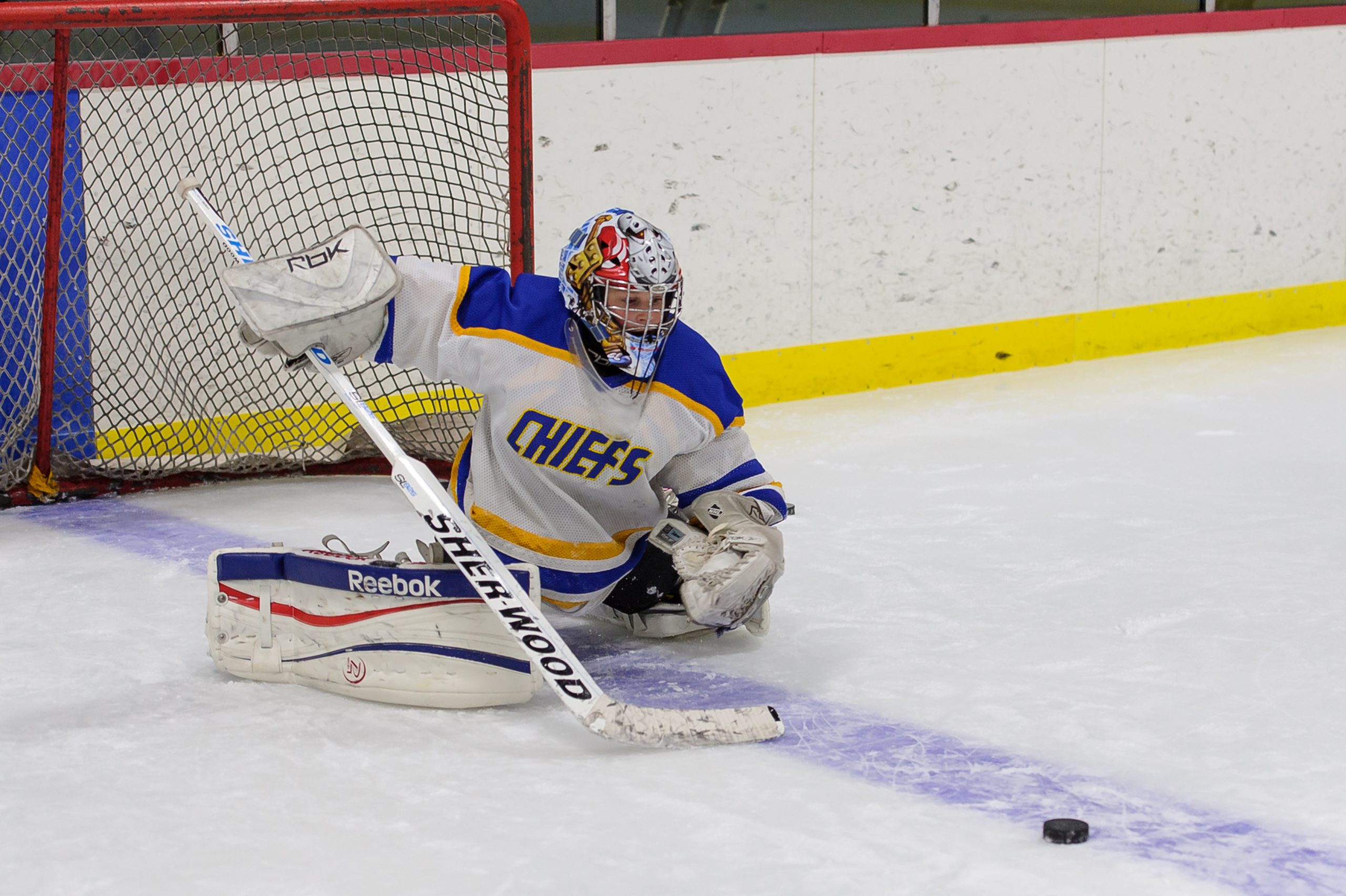
The Pokecheck: A Lost Art
With so much emphasis on goaltenders being taught to remain calm, and let the shooter make the first move in order to place as much of their body in front of the puck, it’s no secret that the pokecheck has gradually made a retreat from the game, and has all but completely disappeared from every goaltender’s bag of tricks.
Over the past couple of years, I’ve been asked by parents, coaches, and students from almost every goaltending school or technical background, “Why doesn’t anyone teach goalies how to pokecheck anymore?”
 When hockey gained popularity, it was at a time where the goaltenders were much more active with their sticks, due in part because they held their sticks with two hands the majority of the time. As the game evolved into goaltenders holding their stick with their blocker hand only, goaltenders were still taught that being able to pokecheck and swing their stick was imperative to the success of their game.
When hockey gained popularity, it was at a time where the goaltenders were much more active with their sticks, due in part because they held their sticks with two hands the majority of the time. As the game evolved into goaltenders holding their stick with their blocker hand only, goaltenders were still taught that being able to pokecheck and swing their stick was imperative to the success of their game.
Prior to the early 1980’s was a time where goaltenders weren’t confined to their creases as much. The game was different, and what was considered “legal contact” is much different than what we see today. Players got away with a lot more on the ice when pulling, holding and hooking the opposition. Therefore, it was an easier game for a goaltender to read because he knew that his teammates could simply “tie up” the opposition when necessary. Meanwhile, he would cut down on the angles by applying extensive challenging tactics (or coasting out toward the puck carrier). Goaltenders at this time had to be quick with their sticks in order to apply a last second attempt at the puck when finding themselves in trouble after challenging a shooter too much. This would force the shooter to make a move to one of the sides of the goaltender, rather than attempting to beat him head-on.
Throughout the 1980’s, the pokecheck and stick work began to decline in use. The reason? The theory that patience would benefit goaltenders more than being too aggressive. The game was starting to pick up speed, playing systems were changing, and we started to see improvements in equipment which allowed goaltenders to worry less about taking shots to above their leg pads and enable them to cover the bottom of the net more efficiently.
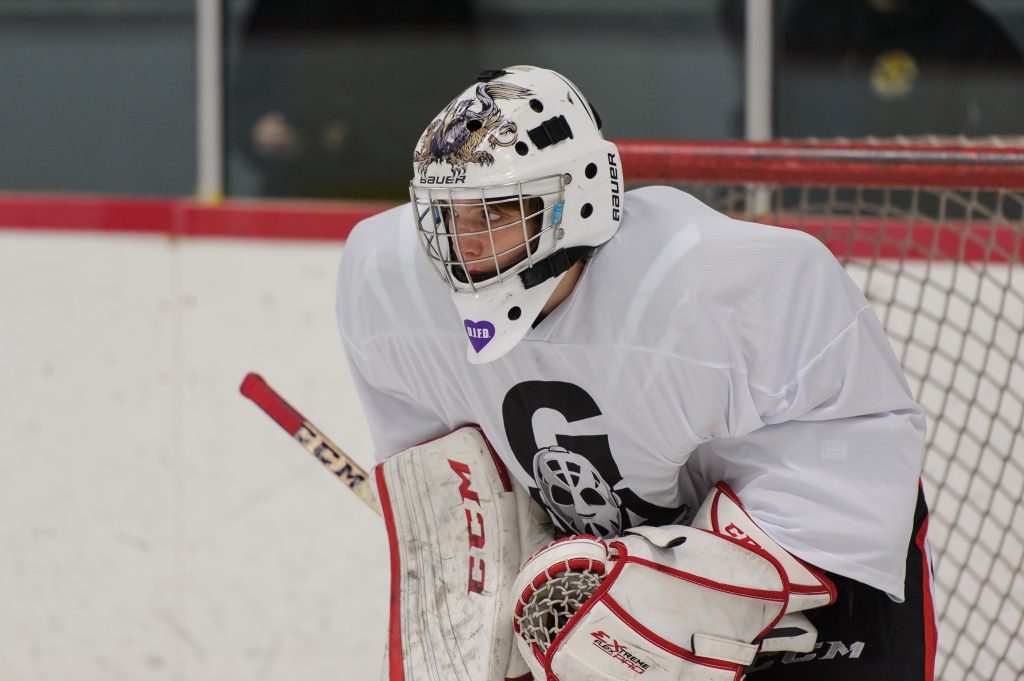 Upon the realization that the game was changing, unorthodox goaltenders began to emerge. They were trained to be more patient although still seen as not being aggressive enough by some. In order to be effective, these goaltenders needed to move within their crease with speed, power, and control through the utilization of direct movements. These new goaltenders were onto something; they were the reason why people say that a goaltender has to be the best skater on the ice.
Upon the realization that the game was changing, unorthodox goaltenders began to emerge. They were trained to be more patient although still seen as not being aggressive enough by some. In order to be effective, these goaltenders needed to move within their crease with speed, power, and control through the utilization of direct movements. These new goaltenders were onto something; they were the reason why people say that a goaltender has to be the best skater on the ice.
The best theory I’ve heard (which I’ll paraphrase) comes from speaking with goalie guru, François Allaire during a conversation I had with him a few years ago about the topic. He stated that it makes more sense to be patient and time getting the body in front of the puck rather than attempt a pokecheck (most of the time) for a few reasons:
Mental Process
In such a quick game, the mind has a minimal amount of time to process thoughts and have the body react. As a goaltender, making the first move can make the recovery and react processes harder due to having to pull the stick back, and react with your body if you miss the pokecheck in the first place.
Weight Distribution
If you’re pokechecking a puck, you will need to throw everything you’ve got into it in order to ensure that the shooter doesn’t have enough time to register what is happening before having the puck knocked from his stick. Doing so (even with one limb) can make it more difficult to recover from in both butterfly or standing positions due to an imbalance in weight distribution. For close range situations, it may also result in the goaltender dipping the shoulder due to a full arm extension. This allows more of the net behind the goaltender to be seen by shooters.
Additional Scoring Chances
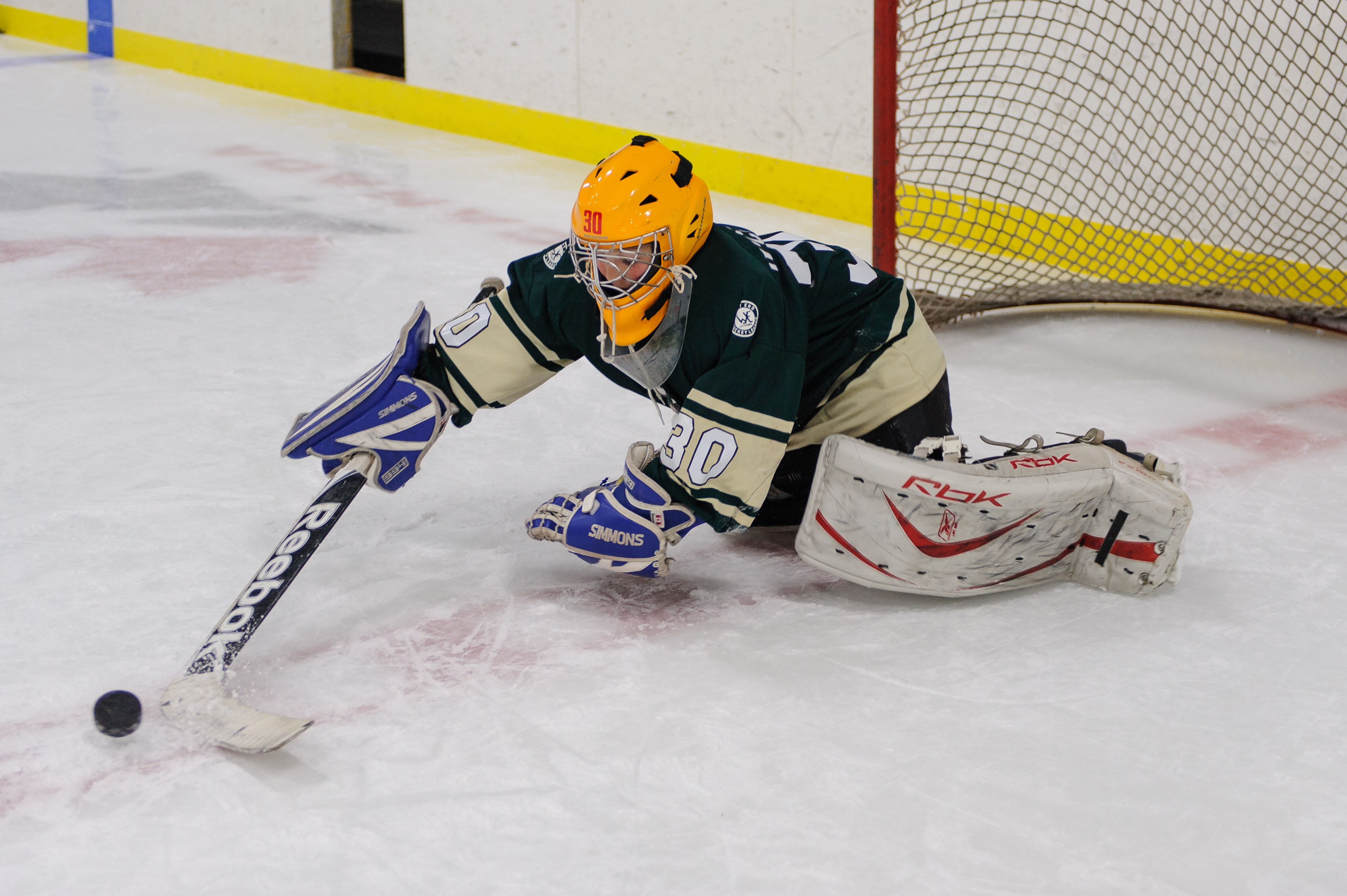 If you’re facing a one-on-one scenario with a shooter, it’s because at some point your teammates failed to defend their end properly. So why would you want to give the opposition more chances at doing the same? By pokechecking in a game, you may be knocking the puck loose off of the first shooter’s stick, but you’re effectively putting the puck back into play. Is this something that you really want if you just had to stop a breakaway? Consider, that after you’ve successfully poked the puck away, you may be holding your stick incorrectly. When the puck lands on the stick of an opposing shooter, is this how you want to be caught holding your stick when he one-times it back toward the net?
If you’re facing a one-on-one scenario with a shooter, it’s because at some point your teammates failed to defend their end properly. So why would you want to give the opposition more chances at doing the same? By pokechecking in a game, you may be knocking the puck loose off of the first shooter’s stick, but you’re effectively putting the puck back into play. Is this something that you really want if you just had to stop a breakaway? Consider, that after you’ve successfully poked the puck away, you may be holding your stick incorrectly. When the puck lands on the stick of an opposing shooter, is this how you want to be caught holding your stick when he one-times it back toward the net?
Instead, be patient. Train yourself to let the shooter make the first move, and to ensure that you’re timing your slides at a matching speed and angle for proper coverage of the net. It makes more sense to take the puck to the body and retain it, than give the other team another scoring chance. Especially after a defensive breakdown.
Net Coverage
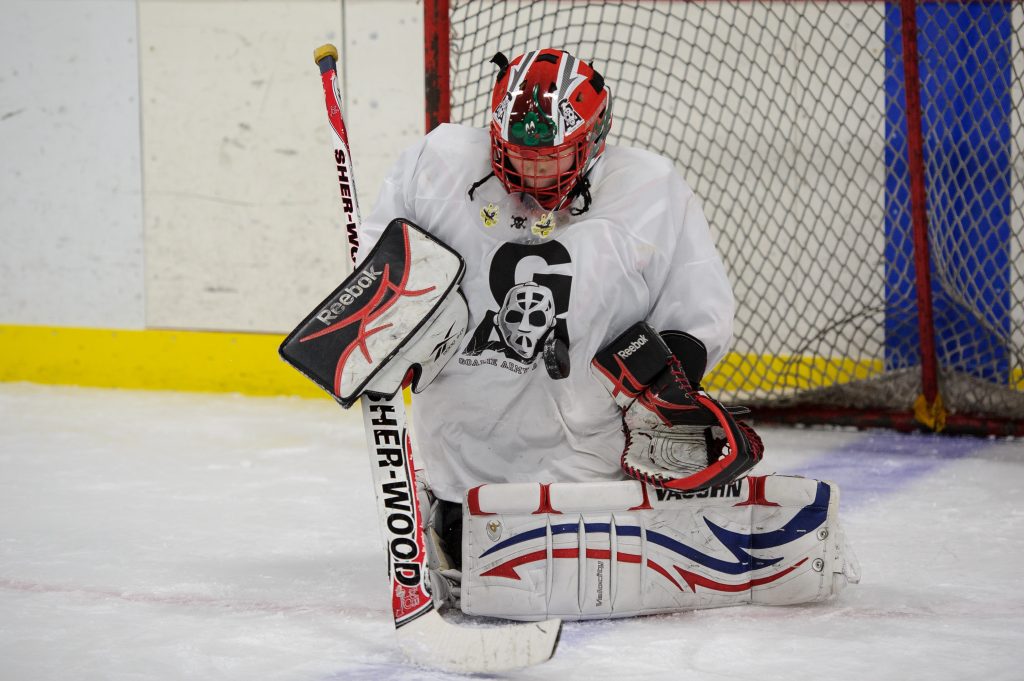 Consider what makes more sense: As a goaltender, would you have more confidence in putting the blade of your stick between the net and the puck or your whole body between the net and the puck?
Consider what makes more sense: As a goaltender, would you have more confidence in putting the blade of your stick between the net and the puck or your whole body between the net and the puck?
Sure, there’s a lot of “what-ifs” here. But then again, the game is filled with what-ifs, and anything can happen.
Goalie Army Academy does believe that there is no wrong way to stop a puck. However, the R3E System teaches our students that efficiency is the key to everything that we do. In a nutshell, there’s no harm in working on pokecheck training, and there’s a time and a place for everything.
We recommend using a pokecheck at your own risk as it seems that by doing so, you may limit your chances at stopping and retaining the puck, and we have strong beliefs that efficiency is the foundation to being an effective goaltender. However, the element of surprise can be a powerful thing to learn, master and utilize.

Leave a Reply